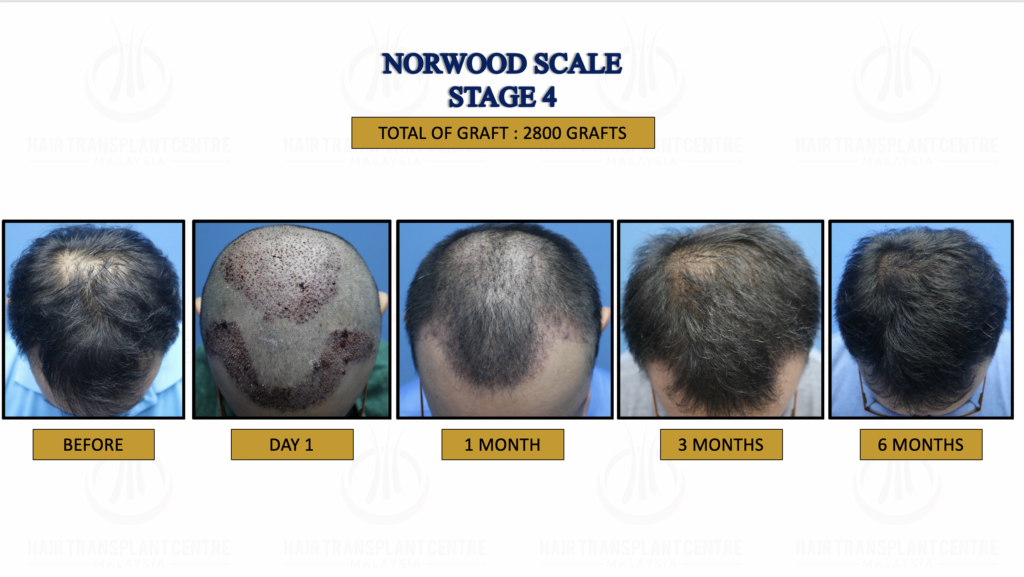
One of the most common causes of hair loss in males, male pattern baldness, affects both the crown and the hairline. However, as a result of male pattern baldness, most men will eventually lose hair from the head. The Norwood Scale is used to quantify the extent of hair loss. Even though there are other methods for dealing with crown hair loss, FUE hair transplants are the most effective. One of the most lucrative sectors in the beauty industry is hair transplantation. The majority of hair loss patients choose FUE hair transplants, making it the most common and popular procedure for hair restoration. Seek the finest FUE Hair Transplant Treatment in Petaling Jaya, Malaysia if you are experiencing hair loss in the crown area. This article describes how a FUE crown hair transplant may restore your self-esteem.
Hair Restoration in the Crown: What Is FUE?
Androgenetic alopecia sufferers can restore their crown hairline with a surgical hair transplant. Hair transplants to the crown of the head differ significantly from those performed elsewhere on the head because the skin there is thicker. The severity of baldness in each individual patient is taken into account while deciding on a treatment plan. PRP therapy may be the only thing needed to address thinning for some people. The same is true for people who have had substantial baldness in the crown or other places; they may need to undergo a FUE hair transplant.
Who would benefit most from crown hair transplants
Despite the fact that FUE hair transplant is the most effective treatment for male pattern baldness, not everyone is a good candidate for the procedure. Patients should think about several things to make sure they qualify as good candidates. Here are a few crucial features that provide a clearer picture:
- Candidates beyond the age of 30 are recommended because of the influence that age plays. Some people start losing their hair at a very young age, prompting an urgent need to find effective treatments. Patients in their twenties who develop premature hair loss may require more treatments.
- Male pattern baldness patients make the finest candidates since they are more likely to fit the ideal profile. The scalp is a common target for this hereditary disorder. In contrast, alopecia areata patients are not good candidates for hair transplants due to a lack of donor hair.
- Overall fitness: A patient must be physically and mentally well to be considered. The immune system may be strengthened via regular exercise, a nutritious diet, and other positive lifestyle choices.
- Although FUE hair transplant may be performed on all hair types, the results will be more satisfying on those with thicker hair and those with naturally curly or wavy hair.
How Does Follicular Unit Extraction Hair Transplantation Work?
Follicular Unit Extraction (FUE) Hair Transplantation involves the following three steps:
Pre-procedure
Patients often see their surgeons or dermatologists for pre-procedure consultations. The method of care, financial commitment, and availability of appropriate facilities are all factors to be considered at this stage.
During procedure
Before beginning the FUE hair transplant, the surgeon will provide a local anesthetic. A donor location, usually at the back of the scalp, is then used to harvest hair follicles, which are then implanted into the crown. The number of follicles required is proportional to the degree of baldness. Complete baldness in the crown will require more grafts than usual.
Post-procedure
After undergoing a FUE hair transplant, the patient will get comprehensive aftercare to aid in the healing process. Time spent recuperating is proportional to the severity of the condition and the quantity of grafts used in the procedure. The healing process for FUE hair transplants and other non-invasive hair treatments takes between 7 and 10 days.
The patient may have to wait as long as eight months to see improvement. This allows new hair follicles to form at their own pace. It takes around 4-8 months for the crown to reach its maximum thickness and fullness potential. Check out our hair transplant result at Klinik Dr Inder in the image above to learn more.
How Long It Takes For Your New Crown Hair To Grow
The crown region may need extensive grafts and subsequent surgical procedures to fully restore your hair. Therefore, the total healing process following procedure may require some time. However, in 12-18 months the entire crown will grow back.
How Many Grafts a Crown Hair Transplant Will Need
This transplant need is condition-specific. However, in most circumstances, it’s advised to use between 800 and 1500 grafts. Your doctor can best determine this for you so it’s best you discuss this during a consultation.
Outcomes From a Hair Transplant on the Crown
Within two to four weeks, hair regrowth is usual in the donor region following FUE hair transplant. It takes around 4-8 months for the recipient region to begin regrowing hair.







